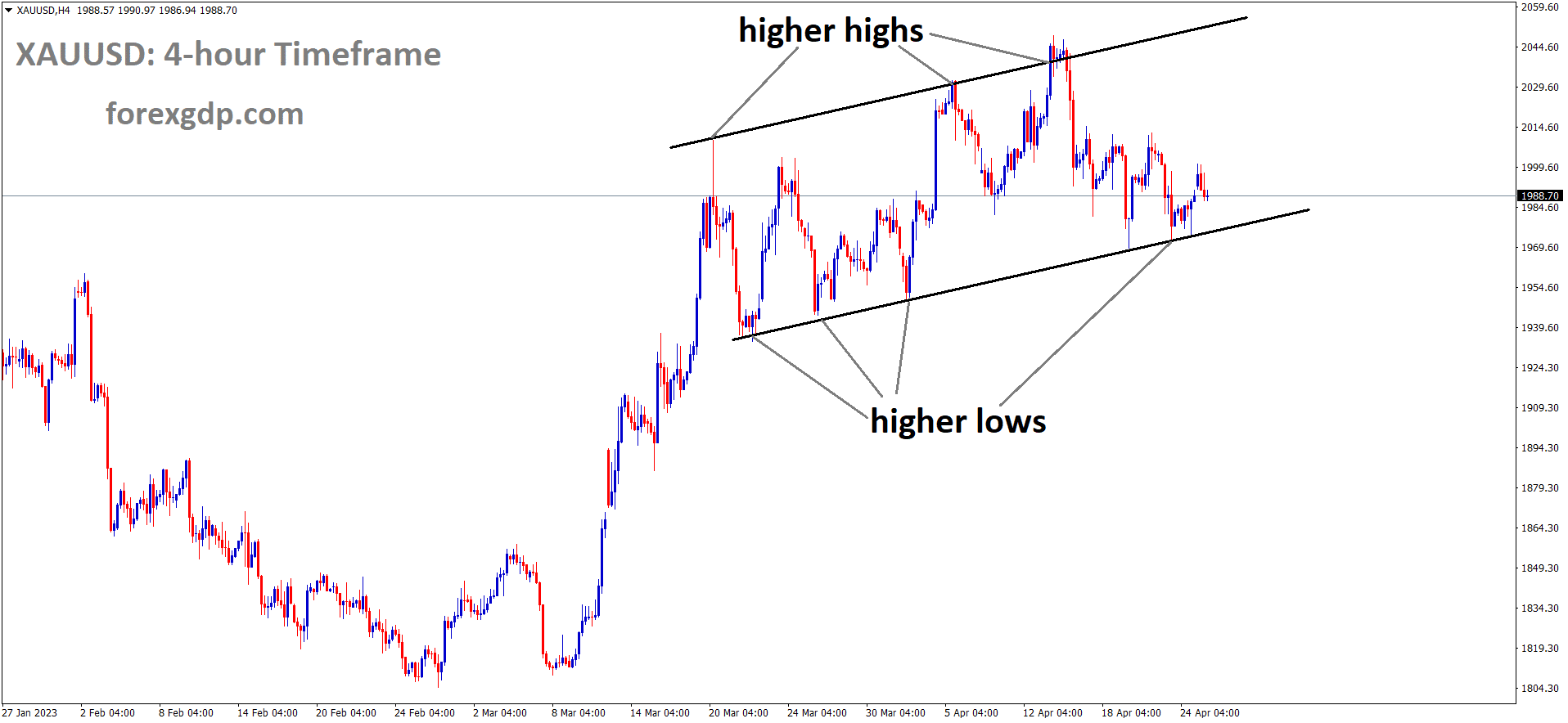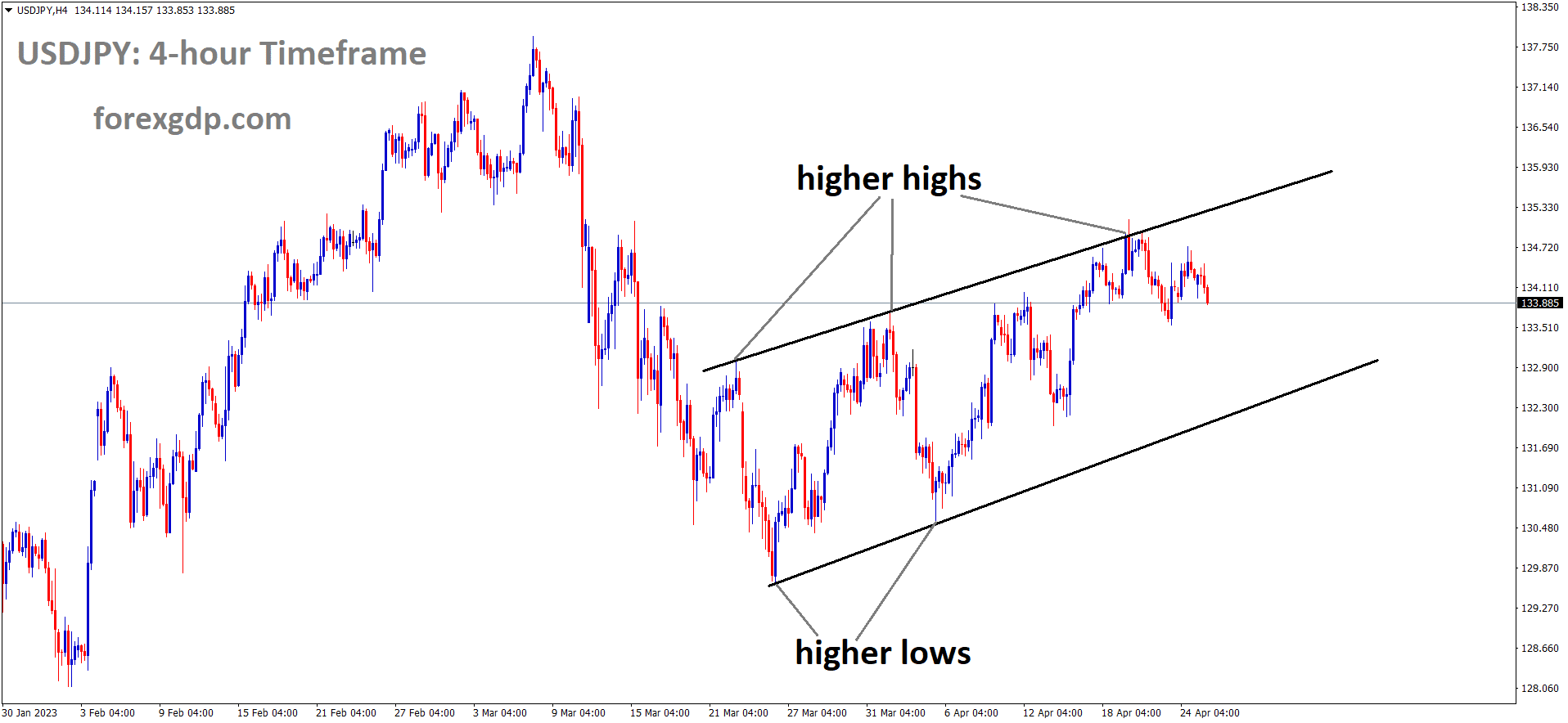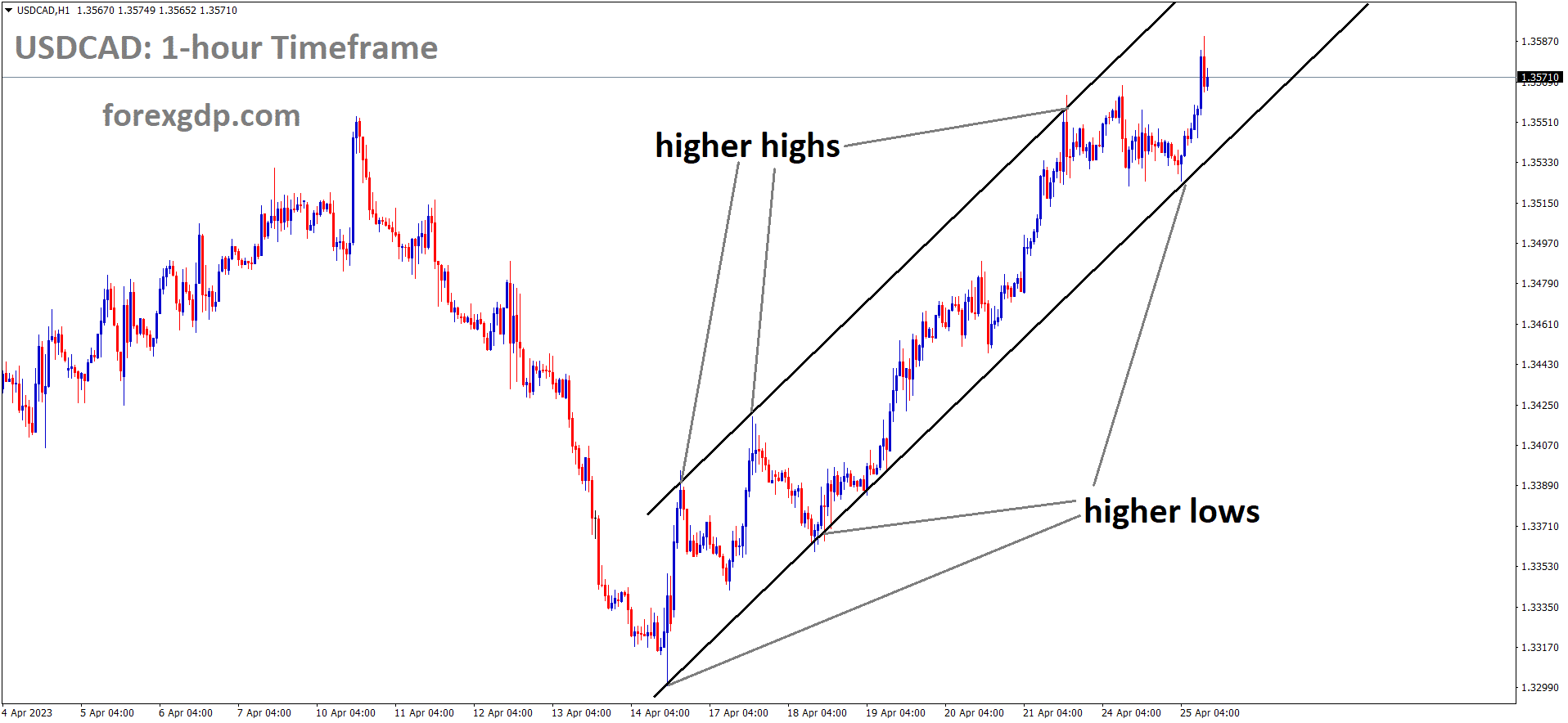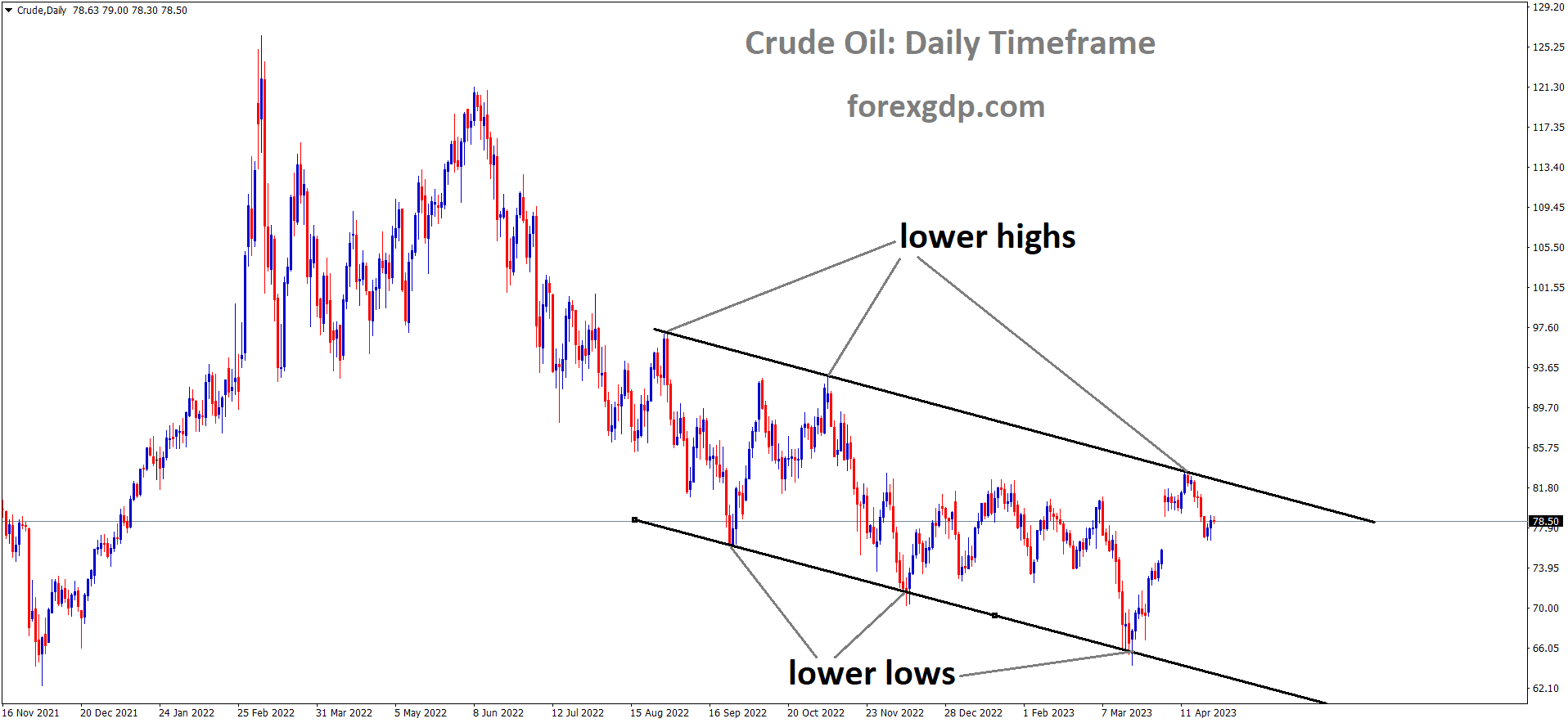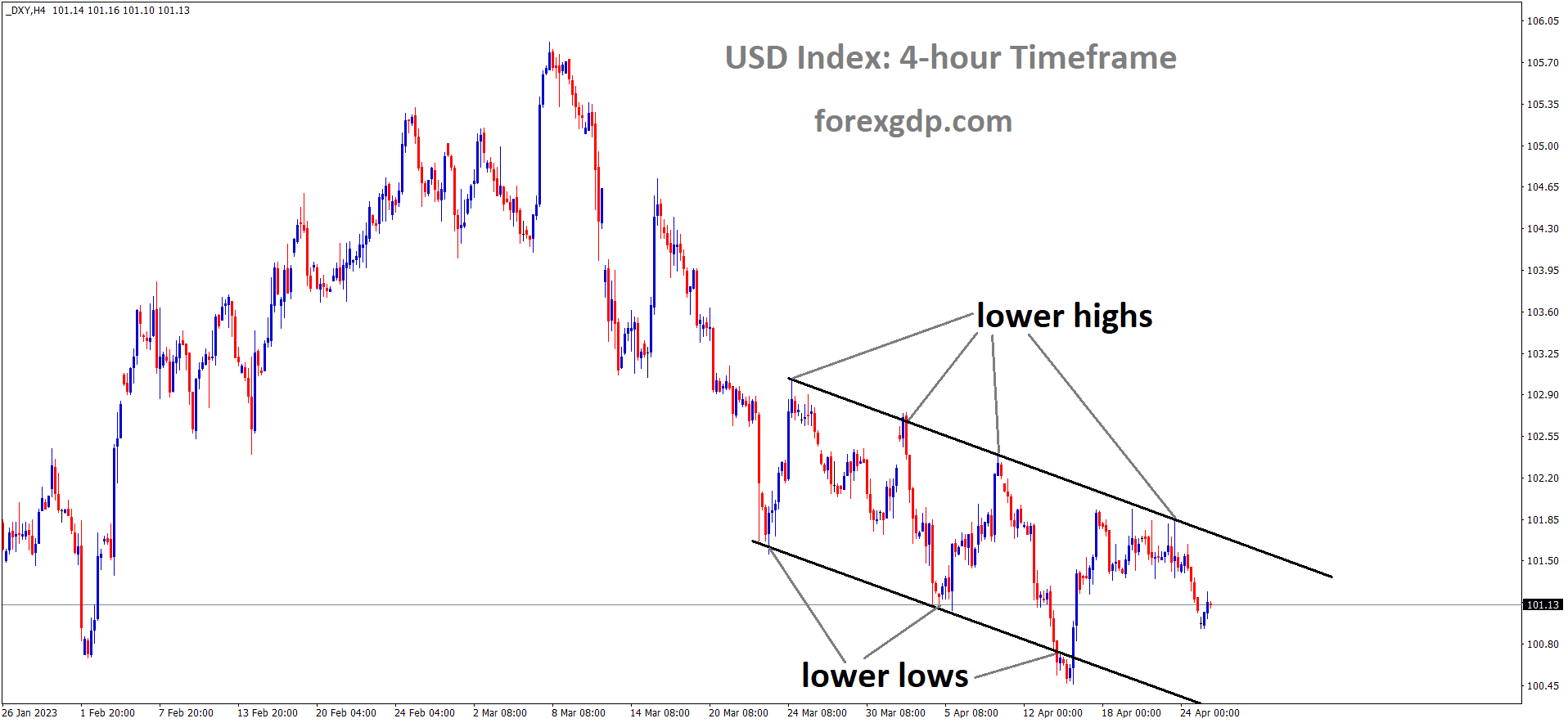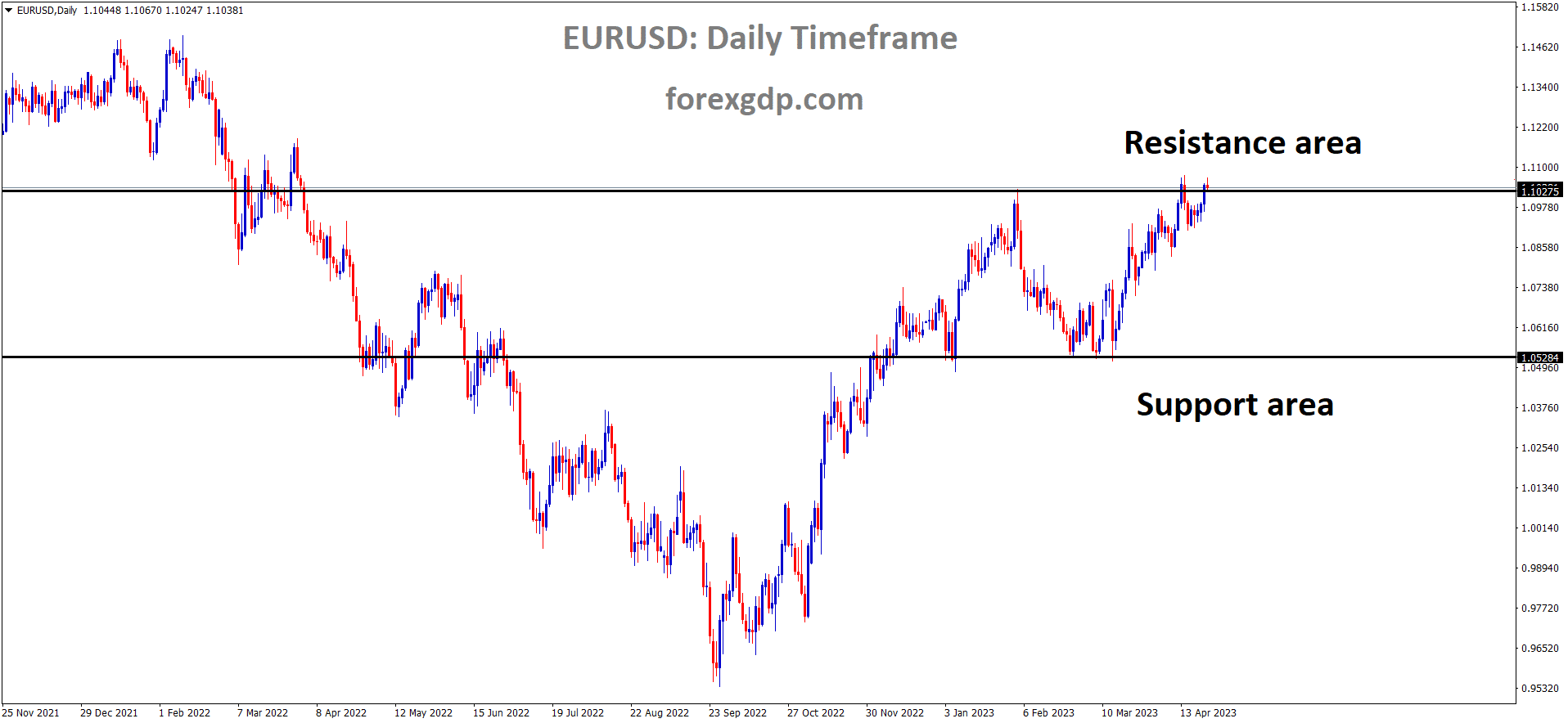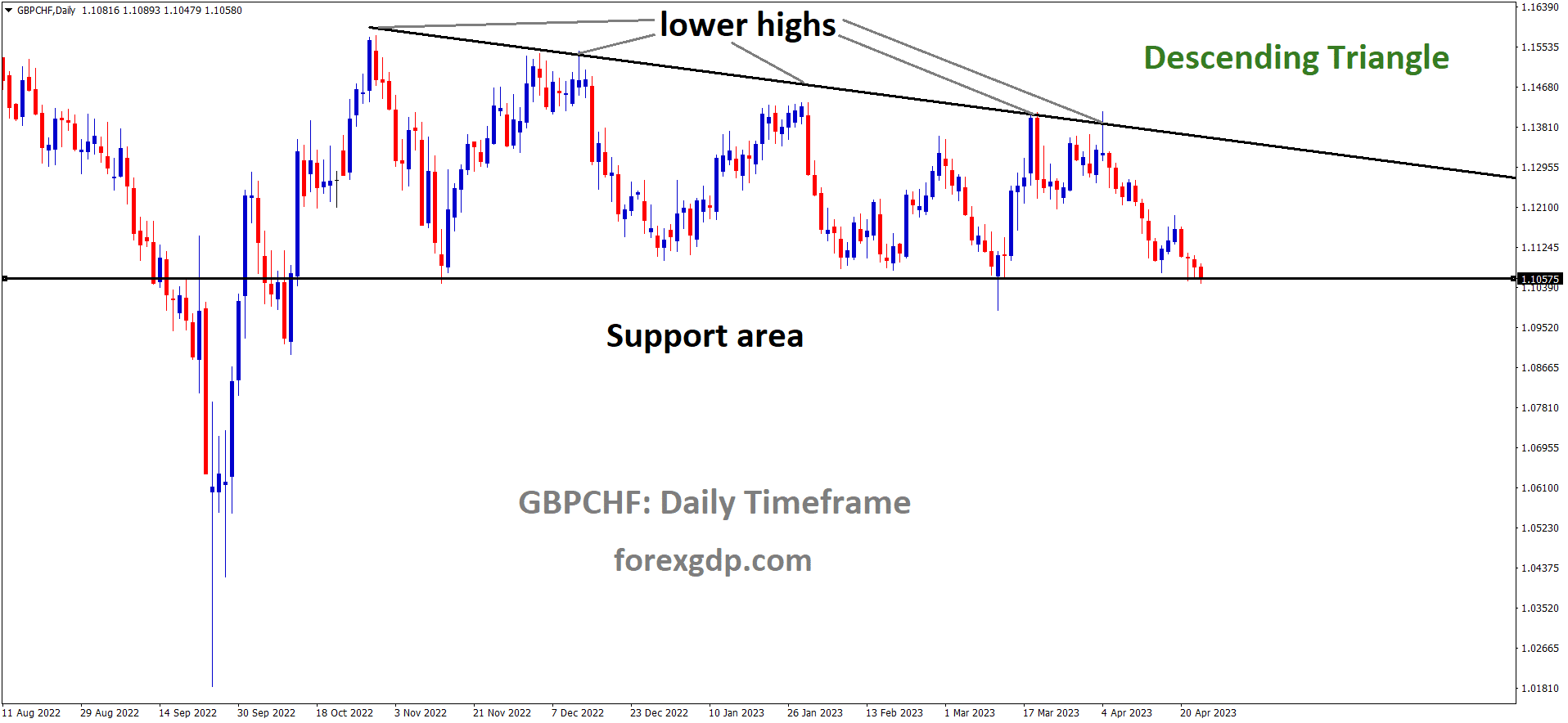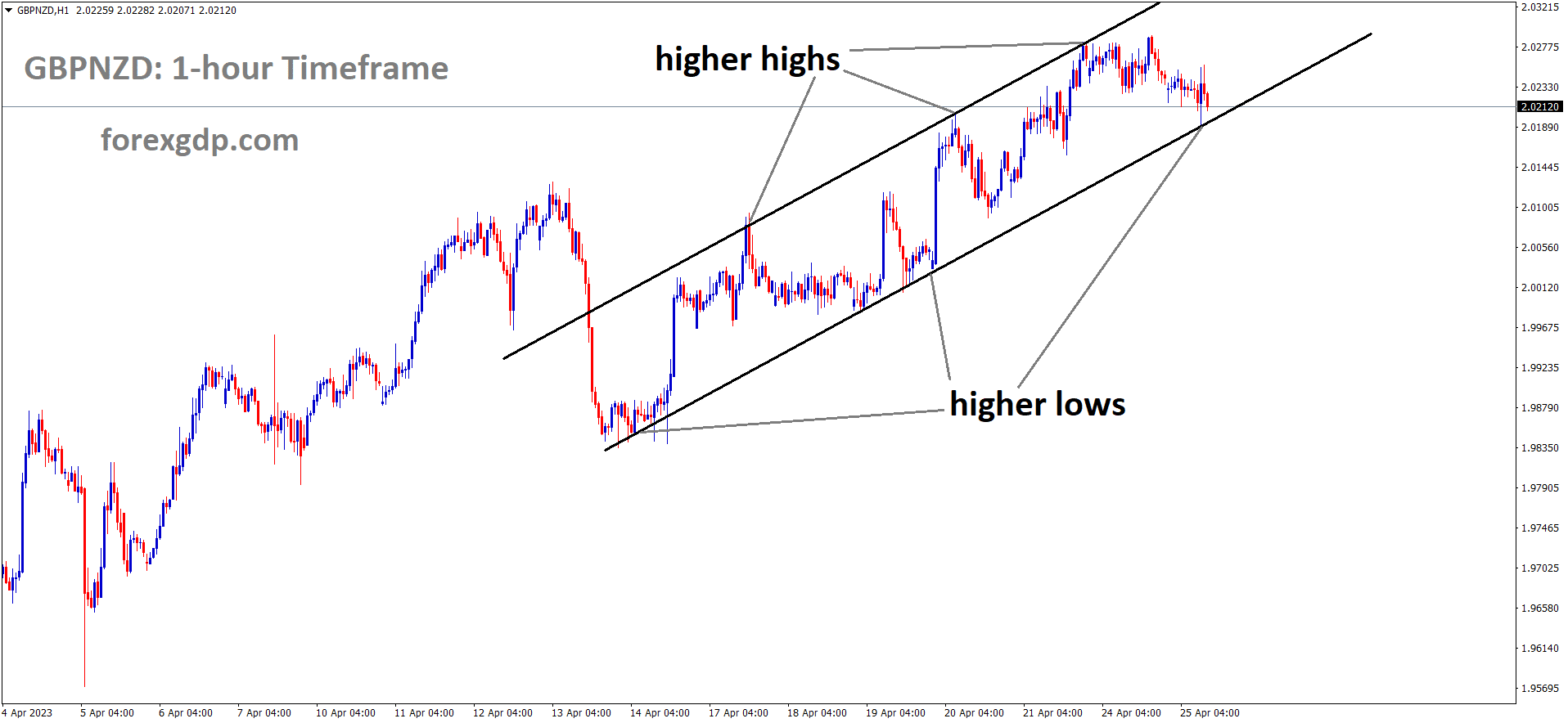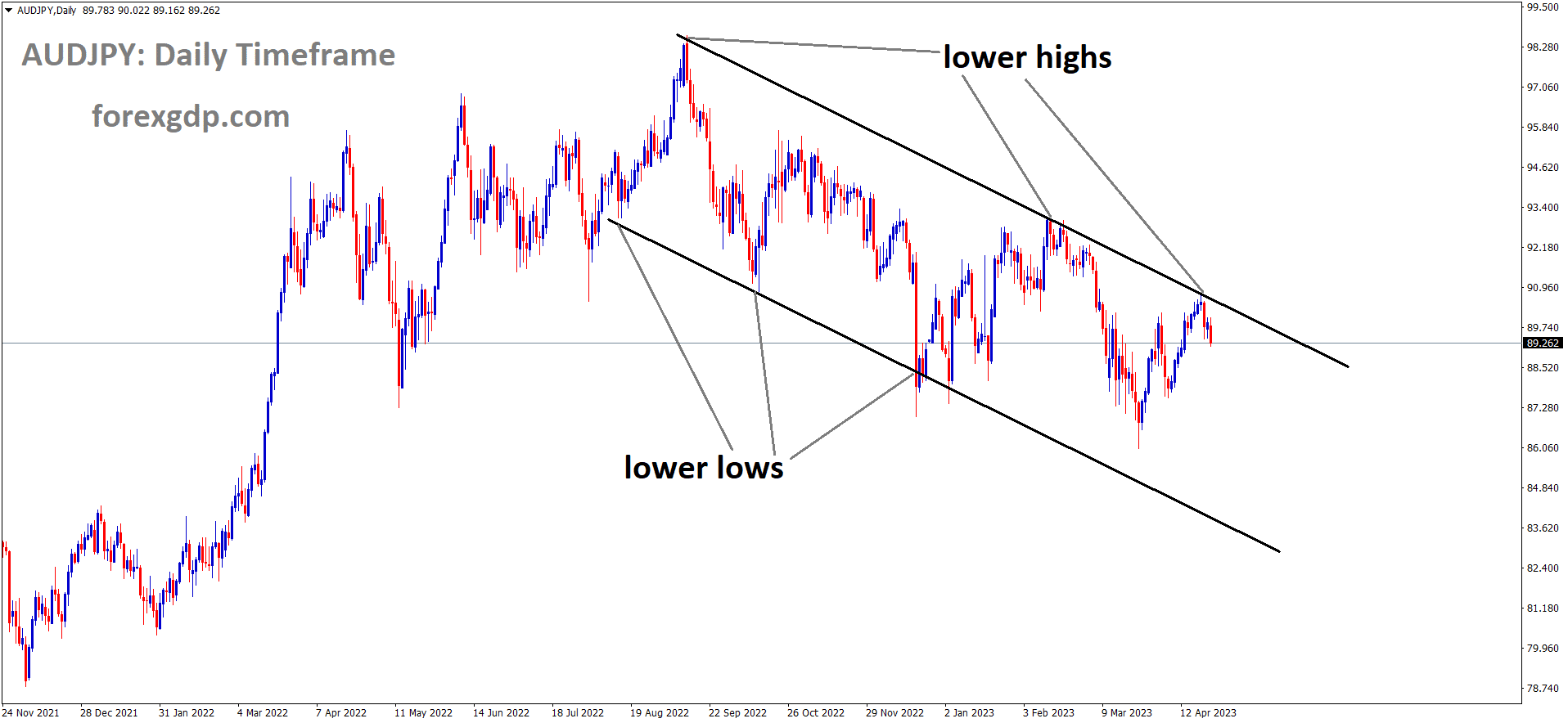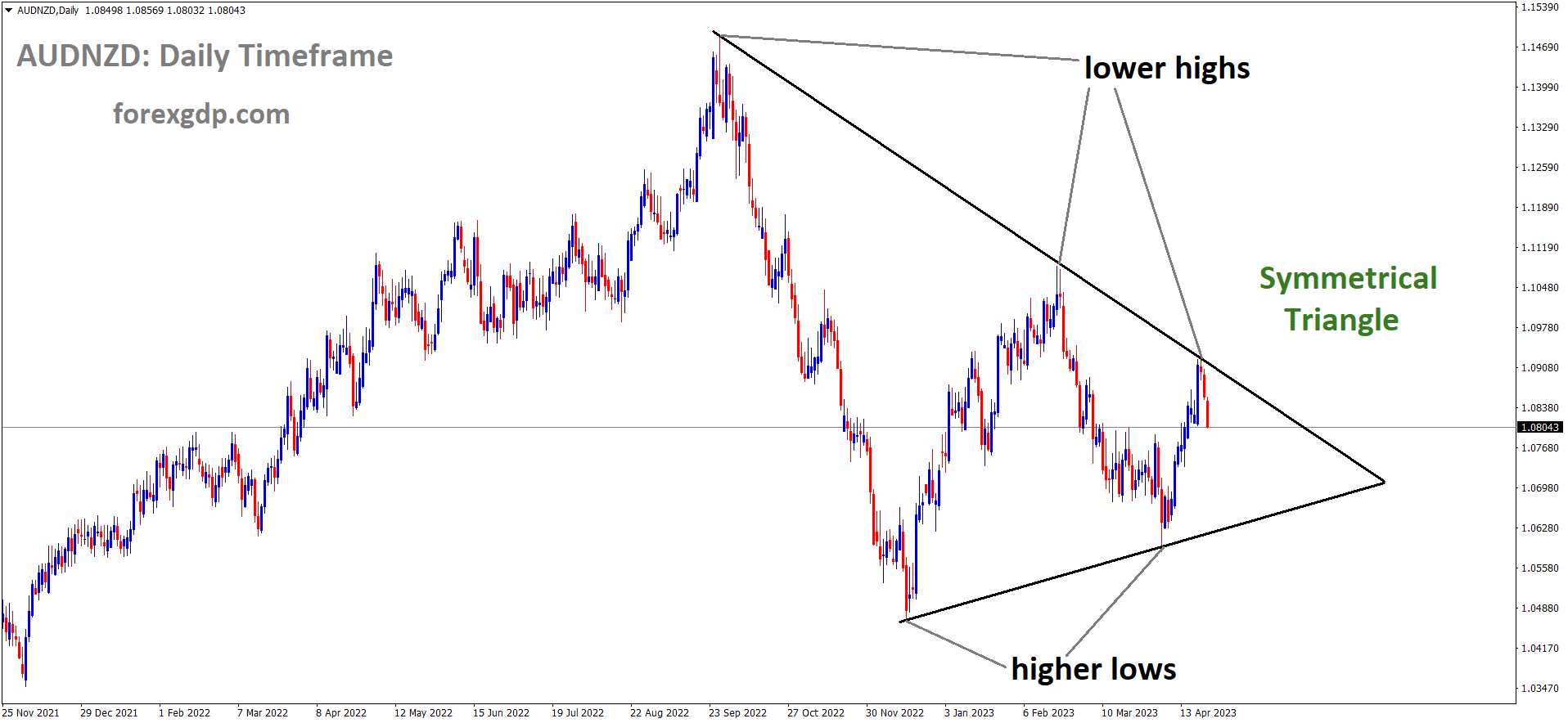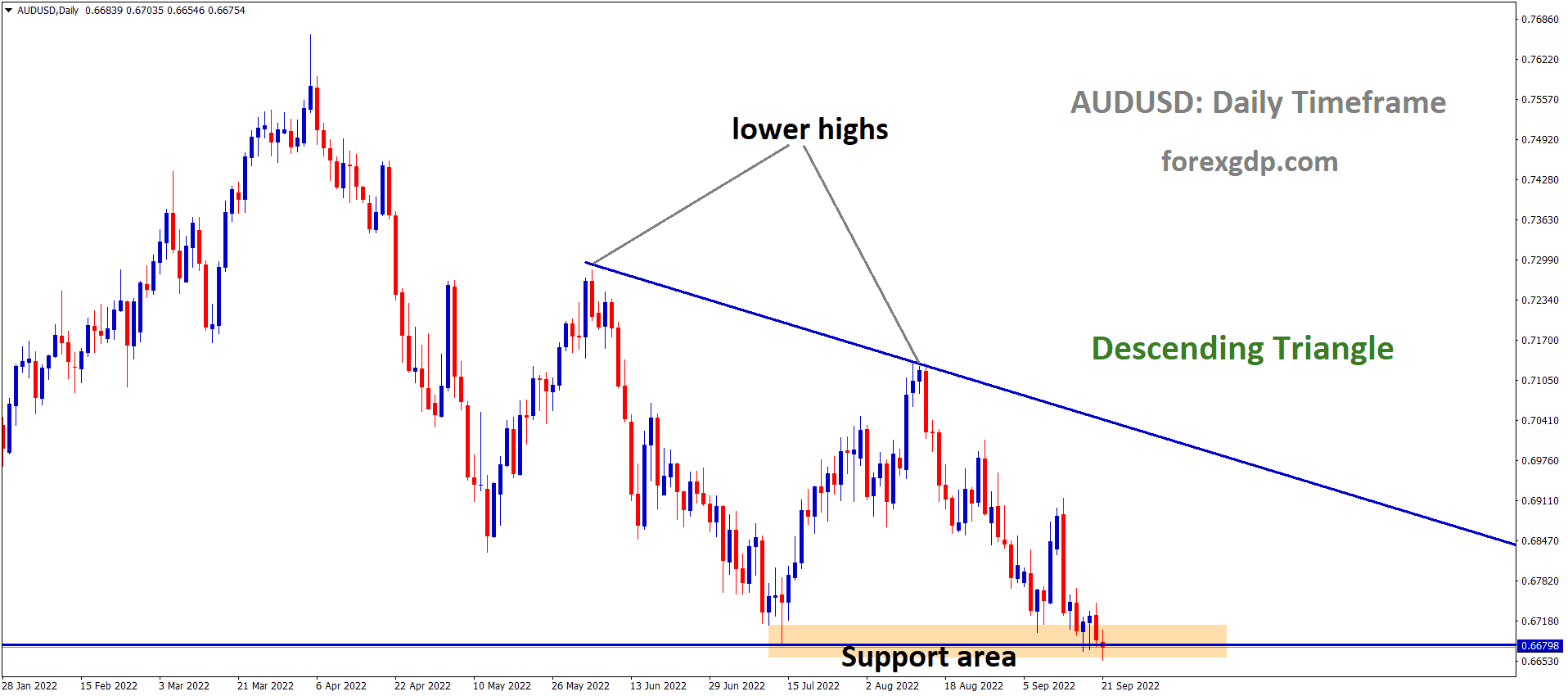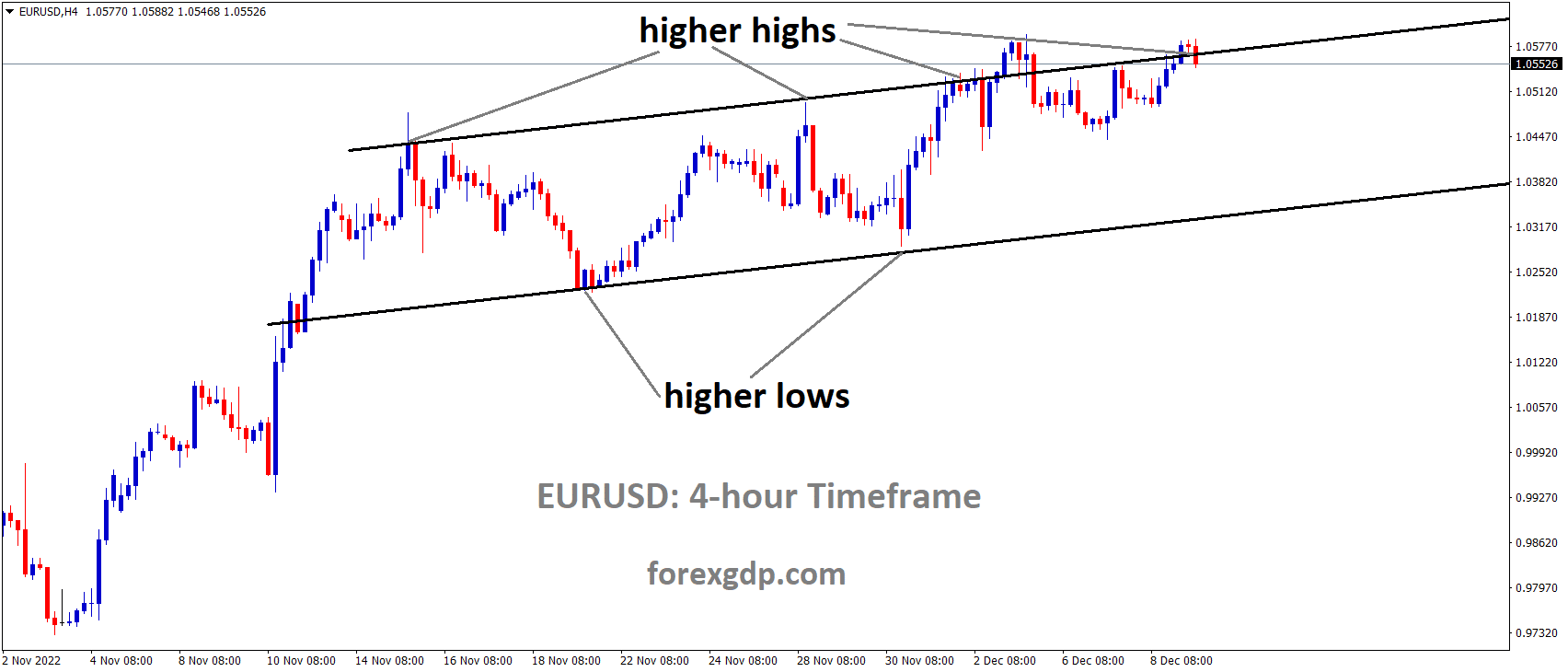GOLD Analysis
XAUUSD Gold price is moving in an Ascending channel and the market has rebounded from the higher low area of the channel.
According to a research by the World Gold Council, global central bankers’ purchases of gold increased by 152% YoY in 2022 as a result of geopolitical tensions in the area.
The FED anticipated 25 bps rate hike is causing a pause in the rise of the gold price. The US GDP and US consumer sentiment this week have increased the volatility of gold in relation to the US dollar.
During Monday’s North American session, the price of gold is moving sideways due to the lack of a catalyst, but it is anticipated to be supported by the weakening US Dollar and decreasing US Treasury bond yields. During a week with little on the US economic calendar, a risk-on drive keeps the US dollar under pressure. The XAUUSD is trading practically flat at $1983.50 at the time of writing. As the week begins, US stocks alternate between gains and losses. The statements of Fed Governor Lisa Cook from last Friday are being heavily relied upon by gold dealers as US Federal Reserve officials enter their time of blackout. She noted that monetary policy is entering an unpredictable era and stated that challenges facing the banking industry could affect the forecast for rising interest rates. Cook does not make the same claim about core PCE but anticipates a slowdown in PCE inflation in March.
The overall decline in US Treasury bond yields is continuing to weigh on the dollar. The US Dollar Index, which gauges the value of the dollar in relation to a group of competitors, lost ground, falling 0.22%, and was last spotted at 101.507, favouring XAUUSD. According to the CME Fed Watch Tool, 90% of economists expect the US Federal Reserve to raise interest rates by 25 basis points in the coming week. But according to traders, the US Federal Reserve may lower interest rates by September’s meeting and again in December. The World Gold Council stated that central bankers are purchasing gold as a result of rising geopolitical tensions in stories published over the weekend by the Financial Times. According to the reports, central banks will grow by 152% YoY in 2022.
In terms of data, the Chicago Fed National Activity Index for March fell to -0.19, exceeding predictions of -20 and remaining constant from February’s reading. The three-month moving average increased to 0.01%, up from -0.09 in February, indicating that the economy is still growing more slowly than expected. The Dallas Fed Manufacturing Business Index in April fell precipitously to -23.4, significantly below the -11.00 predicted value, as the survey revealed that assessments of the overall state of business conditions deteriorated. The frequency of order and shipment changes.
USDJPY Analysis
USDJPY is moving in an Ascending channel and the market has fallen from the higher high area of the channel.
Governor of the Bank of Japan Ueda stated that inflation is currently pushing above 2% only because of monetary easing. In 1-2 years, changes in monetary policy have an impact on prices and the economy. Undershooting inflation is more dangerous than overshooting inflation. Therefore, loosening monetary policy is better for the economy than restricting it.
Tuesday, Kazuo Ueda, the new governor of the Bank of Japan, said in a speech to the Japanese parliament that “trend inflation remains below 2% but progressively accelerating, which is partially attributable to the effect of monetary easing. The effects of changes in monetary policy on the economy and prices take a very long time to manifest. A half-year, a year, or 1.5 years from today, the economy and prices will be impacted by monetary policy decisions. By tightening monetary policy now, inflation, which is already expected to decline due to the dissipation of the impact of import costs, could be reduced in the future. We need to normalise monetary policy if there is a danger of runaway inflation. We believe that the risk of inflation undershooting projection is greater than the risk of inflation overshooting, which is why BoJ must continue its easy policy at this time.
USDCAD Analysis
USDCAD is moving in an Ascending channel and the market has rebounded from the higher low area of the channel.
The market’s weakness in the Canadian Dollar is a result of the decline in oil prices following the OPEC+ Supply Cut announcement.
The dovish approach taken by the Bank of Canada keeps the CAD lower than its counterparts. The Bank of Canada will benefit from a decline in Canadian inflation in the coming months as seen by retail sales and a tight employment market.
The USDCAD is holding onto modest gains near 1.3550 as it climbs to its highest levels in three weeks, set the day before, in the small hours of Tuesday morning in Europe. In doing so, the Loonie pair applauds the US Dollar’s recent recovery and rationalises the decline in the WTI crude oil price during light trading hours. It is important to note, however, that the risk-off atmosphere, which is mostly caused by worries over the US debt ceiling expiration and the Federal Reserve’s dovish raise, seems to have an impact on the mood. Geopolitical concerns about China and Russia, as well as the market’s apprehension ahead of this week’s important growth and inflation reports, are strengthening the negative mood. The West’s willingness to impose more sanctions on the oil-rich country combines China’s purported support for Moscow in its conflict with Ukraine in dampening public opinion.
Crude Oil Analysis
Crude Oil price is moving in the Descending channel and the market has fallen from the lower high area of the channel.
In the midst of these manoeuvres, the S&P 500 Futures register slight losses near 4,155, breaking a two-day advance following mixed results for the Wall Street benchmarks. On the other hand, as the benchmark 10-year bond coupons fall to 3.48% at the latest, the US Treasury bond yields reflect the rush for risk safety. More significantly, as of late, the coupons have flashed 3.48% and 4.98% marks, widening the gap between the one-month and three-month US Treasury bond yields to its greatest extent since 2001. On a different page, while WTI crude oil braces for the first daily loss in three days, up 0.10% intraday near $78.70 by press time, the US Dollar Index licks its wounds at a one-week low, modestly offered near 101.30. The Bank of Canada’s substantially more dovish stance than the Federal Reserve also gives the USDCAD buyers hope, in addition to the risk drivers. However, the US Conference Board’s Consumer Confidence gauge for April, which is forecast to remain stable near 104.1 vs 104.2 before, will be crucial for the intraday trends.
USD Index Analysis
USD index is moving in the Descending channel and the market has fallen from the lower high area of the channel.
USD The US First Quarter GDP as well as the US PCE index are due for this week, which is a busy one for the dollar. Prior to pausing rate increases for the following three months, the US FED has an 85% likelihood of raising interest rates by 25 basis points in the May monthly meeting. Based on recent economic developments, a rate cut may be anticipated at the November meeting.
The US dollar has had a busy week as traders get ready for next week’s FOMC rate decision. The highlights include the first look at US Q1 GDP and the most recent Core PCE data. On May 3rd, a 25 basis point rate increase is anticipated by the financial markets, followed by three meetings of no rate increases. Currently, the November 1st meeting is anticipated to include a first-rate reduction in the US, but this could change depending on this week’s economic data. Up until the FOMC meeting next week, there won’t be any Fed commentary. The yields on US bills and bonds are slightly lower today. The 3-month T-bill is available at 4.96%, down from 5.09% last week, and the US Treasury 2-year is trading at 4.15%, down from 4.29%, which reached a multi-week high last Wednesday. Fears over the approaching US debt ceiling and rising rate forecasts have recently driven up the rates on short-dated US bills. The market continues to indicate that the US will enter a recession this year by inverting the 10-year & 2-year curve by 61 basis points.
The price movement of the US dollar at the moment is constrained and limited to a small short-term trading range. The 101.10 level of technical support is being tested by the dollar, and if it breaks below it, the next levels of support would be 101.00 and then the 100.40–100.60 region. The recent failure of the US dollar to break above the 20-day moving average has highlighted the currency’s current weakness.
EURUSD Analysis
EURUSD is moving in the Box pattern and the market has reached the resistance area of the pattern.
Francois Villeroy de Galhau, the head of the Bank of France and a member of the Governing Council of the European Central Bank, said on Tuesday that inflation will likely fall to about 2% by the end of 2024.Today is probably the day when inflation peaks. Inflation in food prices will start to decline in 2h 2023.
GBPCHF Analysis
GBPCHF is moving in the Descending triangle pattern and the market has reached the horizontal support area of the pattern.
Following the government-backed plan that UBS approved, the Swiss Bank Giant UBS announced that $28 billion in fresh net money will be invested in the Wealth Management division.
After the merger of Collapsed Credit Suisse Bank and Titan UBS Bank, UBS pre-tax profit decreased by 22% in the quarter and revenues decreased by 8%.
The UK has struggled to control extremely high inflation. Despite the Bank of England’s rigorous monetary policy and the UK government’s strict fiscal policy, the inflation rate has been locked in the double-digit range. The early retirement rate, the Brexit event, and the highest food prices in 45 years have been the main roadblocks to the UK’s raging inflation. The street anticipates that BoE governor Andrew Bailey will increase interest rates by another 25 basis points to keep pressure on stubborn inflation.
UBS, a major player in the Swiss banking industry, reported on Tuesday that it received $28 billion in net fresh funding for its wealth management division in the first quarter, $7 billion of which came in the days following the announcement of its government-backed acquisition of struggling rival Credit Suisse. The Zurich-based bank reported underlying pre-tax profit fell 22% to $2.35 billion in the quarter compared to a year earlier, while underlying sales declined 8%. The Zurich-based bank is expected to become Switzerland’s banking titan if the merger closes in the coming months. UBS reported that it repurchased shares during the quarter totaling $1.3 billion and restated that the share-buyback programme has been temporarily paused prior to the closure of the $3 billion ($3.4 billion) acquisition of Credit Suisse that was announced on March 19. “In the first quarter, we maintained positive momentum across the firm and attracted $28 billion of net new money into Global Wealth Management, of which $7 billion came in the last 10 days of March, after the announcement of our acquisition of Credit Suisse,” UBS stated in a statement.
The bank said that during a period of rising interest rates, which can raise the return on lower-risk assets like U.S. government bonds, it captured demand for greater yield into money market and U.S.-government securities. We achieved these results in a quarter that was marked by ongoing worries about interest rates and economic growth, which were made worse by fears about the stability of the financial system, particularly in the United States, according to UBS. In light of this, activity among institutional and private investors remained subdued. The 61 billion Swiss francs in withdrawals that Credit Suisse revealed on Monday for the first three months of the year, with the addition that clients are continuing removing assets, stood in stark contrast to the net inflows at UBS.
The forced union of Switzerland’s two largest banks, which was negotiated by the country’s executive branch, central bank, and financial markets regulator, was intended to assist stabilise the global financial system after the failure of two U.S. banks. The 167-year-old Credit Suisse’s reputation had taken a beating recently due to stock price falls, a succession of scandals, and the exodus of clients concerned about the bank’s future.
GBPNZD Analysis
GBPNZD is moving in an Ascending channel and the market has reached the higher low area of the channel.
The quarterly NZD CPI was 1.2%, down from 1.4% the previous quarter, while the annual CPI inflation rate was 6.7%, down from 7.2% the previous quarter. If lower inflation statistics were to be published in the future months, RBNZ Governor Orr stated that there would be a rate halt in the table.
Investors are nervous ahead of the quarterly reports from major technological firms like Google, Meta Platforms, and Microsoft this week, so the S&P500 ended Monday’s session with minimal gains. Because these companies risk ruin the market atmosphere with missed earnings or worse revenue guidance, investors have backed a cautious stance. Despite lessening inflationary pressures in New Zealand, investors poured money into the antipodean currency. In contrast to the consensus estimate of 1.7% and the prior report of 1.4%, the quarterly Consumer Price Index increased by 1.2%. Despite the street expecting a little slowdown from the previous report of 7.2% to 7.1%, annual inflation slowed to 6.7%. Given that the inflation rate has reached an intermediate peak, it is conceivable that RBNZ Governor Adrian Orr would think about pausing the policy-tightening phase.
AUDJPY Analysis
AUDJPY is moving in the Descending channel and the market has fallen from the lower high area of the channel.
The monthly statement on the Japanese economy indicated a moderate rebound, according to the Cabinet Office of Japan. Costs of imported goods have increased as a result of double-digit depreciation, and Japan has increased the value of its imports for the first time in nine months. Bank failures on the western side may affect JPY currency volatility compared to foreign currencies.
The Japanese Cabinet Office maintained that the economy was experiencing a moderate recovery in its monthly economic report, which was released early on Tuesday.For the first time in nine months, Japan increased the official evaluation of imports. The general stagnation of Japan’s imports modifies the prior statement that they were weak. The value of imported items increased as a result of the yen’s double-digit devaluation from a year earlier. The administration acknowledged an increase in bankruptcies. A caution about global financial instability that was inserted last month in reaction to Western bank failures has been maintained.
AUDNZD Analysis
AUDNZD is moving in the Symmetrical triangle pattern and the market has fallen from the top area of the pattern.
Australia’s Monthly CPI data decreased from the 8.4% peak in December 2022 to 6.6%, down from 6.8% the month before. Therefore, the quarterly CPI is predicted to come in at 1.3% instead of 1.9%, and the annual inflation is predicted to fall to 6.9% from the previously reported 7.8%.
After failing to convincingly surpass the important resistance level of 90.00 in the early Tokyo session, the AUDJPY pair has had a slight retracement. The risk barometer is working to confidently move its auction beyond 90.00. Considering encouraging signals from AUD/USD, bulls are predicted to continue controlling the AUDJPY pair. Prior to the Wednesday release of the Consumer Price Index data, the Australian Dollar is anticipated to remain erratic.According to consensus, the quarterly inflation rate increased by 1.3%, but at a slower rate than the 1.9% velocity seen in the final quarter of CY2022. From the previous release of 7.8%, annual inflation is projected to decline to 6.9%.
Aside from these, the monthly inflation indicator is projected to slow from its previous release value of 6.8% to 6.6%. Australia’s monthly CPI has drastically decreased from December, when it reached a peak of 8.4%. After raising interest rates to 3.60%, the Reserve Bank of Australia (RBA) has paused its rate-hiking cycle. The Australian economy is predicted to continue to slow down, which will keep pressure on inflation high. The Bank of Japan’s interest rate decision will be this week’s major Japanese Yen-related event. Given that the effects of rising import prices have already trickled down to the economy and that Japan’s inflation is showing indications of peaking, it is likely that new BoJ Governor Kazuo Ueda would maintain the expansionary interest rate policy. BoJ Ueda refuted changing the Yield Curve Control earlier on Monday, noting the slowing of inflation.
Don’t trade all the time, trade forex only at the confirmed trade setups.
Get Live Free Signals now: forexgdp.com/forex-signals/

